US military shoots down third flying object in three days after Great Lakes airspace closure
Issued on: 12/02/2023 -
Text by:NEWS WIRES
The U.S. military shot down a flying object over Lake Huron near the Canadian border, U.S. officials said on Sunday, as North American security forces have been on high alert for airborne threats.
Two U.S. officials, speaking on condition of anonymity, told Reuters that the military had shot down the object but declined to say whether it resembled the large white Chinese balloon that was shot down earlier this month.
U.S. Representative Elissa Slotkin, who represents a district in Michigan, near where the incident took place, said pilots from the U.S. Air Force and National Guard shot down the object. "Great work by all who carried out this mission," she wrote on Twitter.
"Recovery teams are on the ground, looking to find and analyze the object," Prime Minister Justin Trudeau told reporters on Sunday.
"The security of citizens is our top priority and that's why I made the decision to have that unidentified object shot down," he said, adding that it had posed a danger to civilian aircraft.
North America has been on high alert for aerial intrusions following the appearance of a white, eye-catching Chinese airship over American skies earlier this month.
The 200-foot-tall (60-meter-high) balloon - which Americans have accused Beijing of using to spy on the United States - caused an international incident, leading Secretary of State Antony Blinken to call off a planned trip to China only hours before he was set to depart.
Surveillance fears appear to have U.S. officials on high alert.
On Sunday, the Federal Aviation Administration briefly closed space above Lake Michigan. On Saturday, the U.S. military scrambled fighter jets in Montana to investigate a radar anomaly there.
Canada also closed airspace on Sunday near Tobermory, Ontario, which is on Lake Huron near the U.S. border, according to Nav Canada, a private non-profit that operates Canada's air traffic control system.
China denies the first balloon was being used for surveillance and says it was a civilian research craft. It condemned the United States for shooting it down off the coast of South Carolina last Saturday.
At least three other flying objects have been destroyed over North America since then, as military and intelligence officials focus on airborne threats.
U.S. Senate Majority Leader Chuck Schumer told U.S. broadcaster ABC that U.S. officials think two of the latest objects were smaller balloons than the original one, which was brought down off the coast of South Carolina on Feb. 4.
A second was shot down over sea ice near Deadhorse, Alaska, on Friday. The third was destroyed over the Yukon on Saturday.
The White House said only that the recently downed objects "did not closely resemble" the Chinese balloon, echoing Schumer's description of them as "much smaller."
"We will not definitively characterize them until we can recover the debris, which we are working on," a spokesperson said.
Schumer said he was confident U.S. investigators scouring the ocean off South Carolina to recover debris and electronic gadgetry from the original balloon would get to the bottom of what it was being used for.
Debris in remote locale
Canadian counterparts trying to piece together what was shot down over the Yukon may have their own challenges. The territory is a sparsely populated region in Canada's far northwest, which borders Alaska. It can be brutally cold in the winter, but temperatures are unusually mild for this time of year, which could ease the recovery effort.
Speaking to Fox News, House of Representatives Foreign Affairs Committee Chairman Michael McCaul said the balloon shot down over the South Carolina coast had been on a mission to get imagery of sensitive American nuclear sites.
"They want to get imagery, get intelligence on our military capability, particularly nuclear," McCaul said. "And they're building quite a nuclear stockpile themselves."
Republican lawmaker Mike Turner, who serves on the U.S. House Armed Services Committee, suggested the White House might be overcompensating for what he described as its previously lax monitoring of American airspace.
"They do appear somewhat trigger-happy," Turner told CNN on Sunday. "I would prefer them to be trigger-happy than to be permissive."
Republicans have criticized the Biden administration over its handling of the incursion by the suspected Chinese spy balloon, saying it should have been shot down much earlier.
(REUTERS)
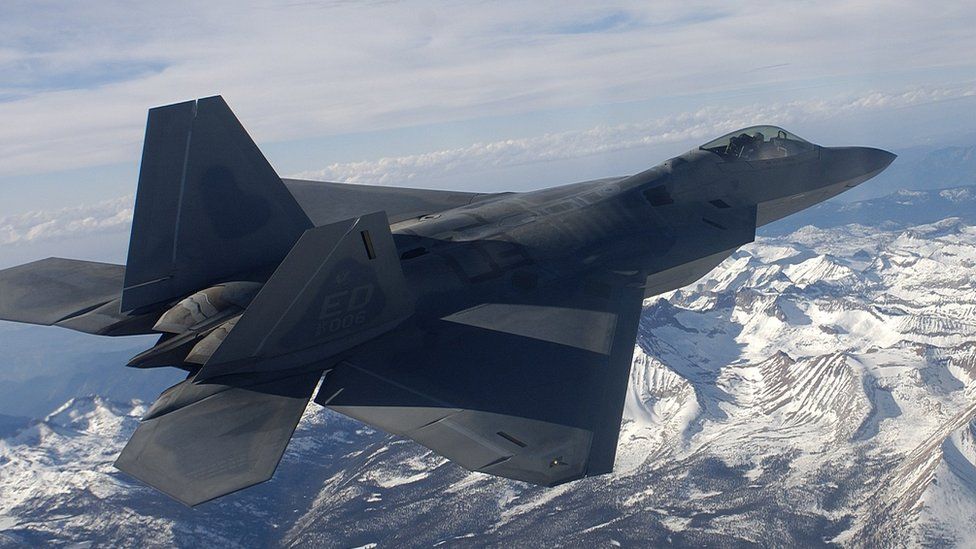
The object, which was not deemed a military threat, has been described by defence officials as unmanned and octagonal in shape. It was downed by a missile fired from an F-16 fighter jet at 14:42 local time (19:42 GMT).
in Washington
The US has shot down another unidentified flying object in the fourth military operation of its kind this month.
President Joe Biden ordered it to be downed near Lake Huron, close to the Canadian border, on Sunday afternoon.
The object could have interfered with commercial air traffic as it was traveling at 20,000ft (6,100m), a Pentagon statement said.
It was first detected above military sites in Montana on Saturday, it added.
A suspected Chinese spy balloon was downed off the coast of South Carolina on 4 February after hovering for days over the continental US. Officials said it originated in China and had been used to monitor sensitive sites.
China denied the object was used for spying and said it was a weather monitoring device that had been blown astray. The incident - and the angry exchanges in its aftermath - ratcheted up tensions between Washington and Beijing.
On Sunday, a defence official said the US had communicated with Beijing about the first object after receiving no response for several days. It was not immediately clear what was discussed.
Since that first incident, American fighter jets have shot down three further high-altitude objects in as many days.
President Biden ordered an object to be shot down over Alaska on Friday, and on Saturday a similar object was shot down over the Yukon in north-western Canada.
Officials have not publicly identified the origin or purpose of these objects. Both the US and Canada are still working to recover the remnants, but the search in Alaska has been hampered by Arctic conditions.
"These objects did not closely resemble, and were much smaller than, the [4 February] balloon and we will not definitively characterise them until we can recover the debris," a White House National Security spokesperson said.

Unidentified flying objects - timeline
4 February: US military shoots down suspected surveillance balloon off the coast of South Carolina. It had drifted for days over the US, and officials said it came from China and had been monitoring sensitive sites
10 February: US downs another object off northern Alaska which officials said lacked any system of propulsion or control
11 February: An American fighter jet shoots down a "high-altitude airborne object" over Canada's Yukon territory, about 100 miles (160 km) from the US border. It was described as cylindrical and smaller than the first balloon
12 February: US jets shoot down a fourth high-altitude object near Lake Huron "out of an abundance of caution"
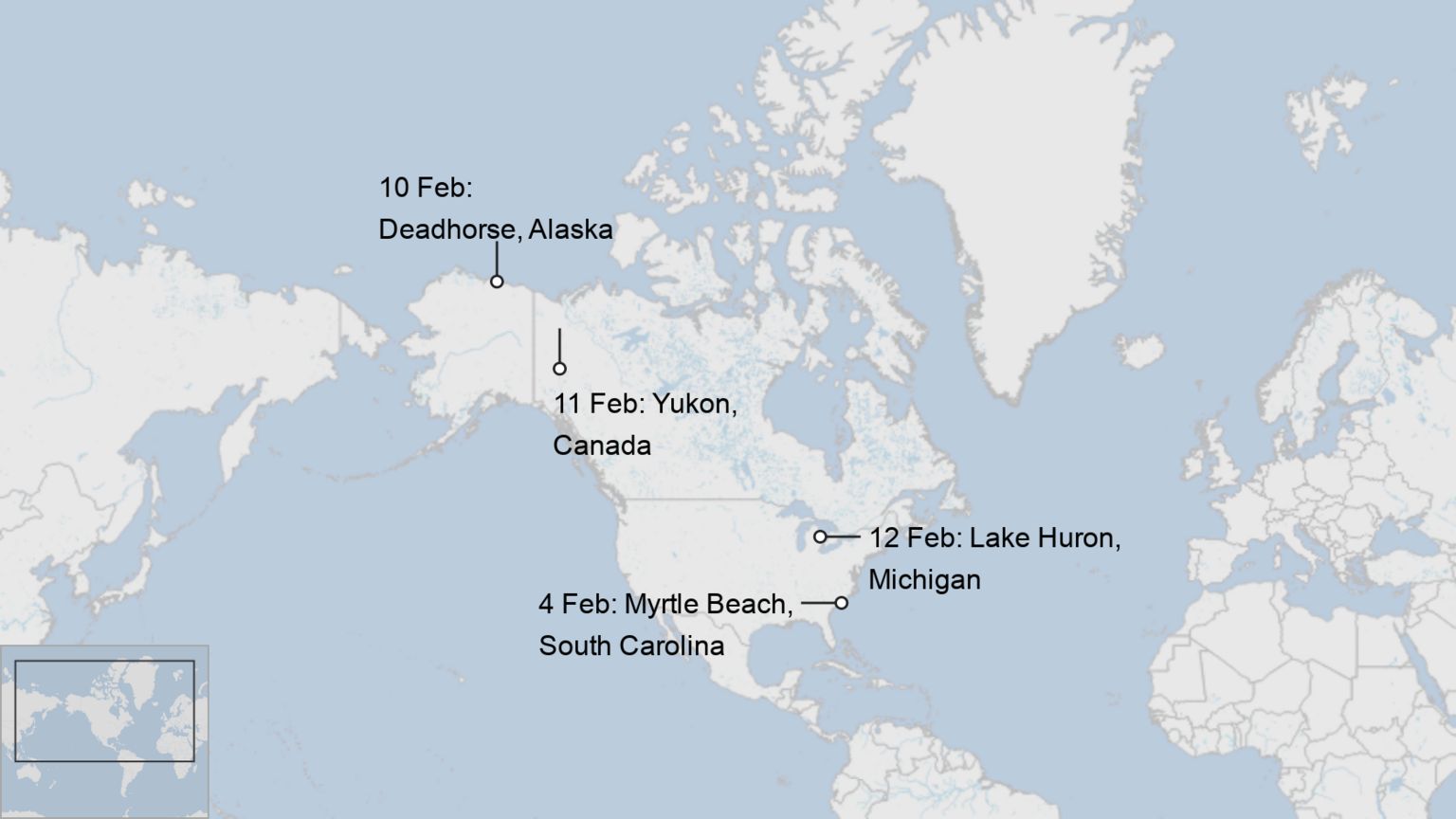

Later on Sunday, the US Air Force general overseeing North American airspace said he had not ruled any explanation out - including extraterrestrial life.
"I'll let the intel community and the counterintelligence community figure that out. I haven't ruled out anything," Gen Glen VanHerck told reporters after being asked about the possibility of aliens.
One senior official told ABC News that the three most recent objects to be shot down were likely weather balloons and not surveillance devices.
But this was contradicted by the top Democrat in Congress, who earlier told the broadcaster that intelligence officials believed the objects were in fact surveillance balloons.
"They believe they were [balloons], yes," Senate Majority Leader Chuck Schumer said, adding that they were "much smaller" than the first one shot down off the South Carolina coast.
"The bottom line is, until a few months ago, we didn't know of these balloons," he said.
Democrat Debbie Dingell, one of several Michigan members of Congress who applauded the military for downing the object over the state on Sunday, joined growing calls for the White House and defence officials to provide more information.
"We need the facts about where they are originating from, what their purpose is, and why their frequency is increasing," she said.
Democratic Senator Jon Tester, who represents Montana, told the BBC's US partner CBS: "What's gone on the last two weeks or so... has been nothing short of craziness. And the military needs to have a plan to not only determine what's out there, but determine the dangers."
Republicans have repeatedly criticised the Biden administration for its handling of the first suspected spy balloon, saying it should have been shot down far sooner.
Meanwhile, Defence Secretary Ben Wallace said the UK would conduct a security review following the recent incidents in the US and Canada. "This development is another sign of how the global threat picture is changing for the worse," he said.
Objects shot down over Alaska, Yukon were balloons, US Senate leader says
Schumer says devices downed from 40,000 feet in air were smaller than Chinese balloon downed off South Carolina earlier this month, officials trying to analyze debris for data
WASHINGTON (AP) — The United States believes the unidentified objects shot down by American fighter jets over Canada and Alaska were balloons, though smaller than the Chinese balloon downed over the Atlantic Ocean last weekend, Senate Majority Leader Chuck Schumer said Sunday.
Schumer told ABC’s “This Week” that he was briefed on Saturday night by US President Joe Biden’s national security adviser, Jake Sullivan, after the incident hours earlier over the Yukon. On Friday, an object roughly the size of a small car was downed over remote Alaska, according to the White House.
Asked whether those two recent objects were balloons, Schumer said, “They believe they were, yes, but much smaller than the first one.”
The government has said the first balloon was about the size of three school buses. It was shot down February 4 off the South Carolina coast after it had traversed the United States.
The Biden administration said it was used for surveillance. China claims it was on a meteorological research mission.
Schumer said teams were recovering debris from the objects and would work to determine where they came from.

The ones downed on Friday and Saturday were smaller and flying at a lower altitude of about 40,000 feet, within the airspace occupied by commercial flights, compared with about 60,000 feet for the first one.
“The bottom line is until a few months ago we didn’t know about these balloons,” Schumer said. “It is wild that we didn’t know…. Now they are learning a lot more. And the military and the intelligence are focused like a laser on first gathering and accumulating the information, then coming up with a comprehensive analysis.”
Senate Majority Leader Chuck Schumer (D-N.Y.) acknowledged it was "wild" the U.S. didn't know about the Chinese government's use of balloons "until a few months ago," during an interview on ABC's "This Week" Sunday.
Catch up quick: Last week the U.S. shot down a suspected Chinese surveillance balloon that had traversed the U.S. and is believed to have been capable of collecting communications.
- Pentagon officials have said that similar balloons crossed into U.S. airspace briefly at least three times during the Trump administration.
- The State Department spokesperson said earlier this week that China has flown similar surveillance balloons over more than 40 countries across five continents in the past.
- The U.S. on Friday shot down a "high-altitude" object that violated its airspace above territorial waters near Alaska and on Saturday Canadian Prime Minister Justin Trudeau announced that an unidentified object had been shot down in its airspace.
- Little is known about the origins of the latter two objects and it is not clear whether they were in any way connected to the first.
State of play: The U.S. military and intelligence are "focused like a laser" on gathering more information about the balloons, Schumer said.
- Asked by host George Stephanopoulos whether the surveillance balloon program would need to be shut down, Schumer agreed that the Chinese government would likely need to "get rid of it."
- “I think the Chinese were humiliated. I think the Chinese were caught lying, and it's a real step back for them," Schumer said.
- Schumer added that he believed Sen. Jon Tester (D-Mont.) was looking into why it took so long for the U.S. military and intelligence to know about the balloons and said he supported Congress looking into the matter.
The big picture: Tester told CBS' "Face the Nation" Sunday that while the military likely had "some" awareness of the use of balloons, Congress needs to have a debate about whether that awareness was at a sufficient level.
- Going forward, the U.S. needs to have a specific plan for how to deal with such objects, "so we know exactly what's going to happen when these balloons come in and their threat is assessed," Tester said.
- Rep. Michael McCaul (R-Texas), the chair of the Foreign Affairs Committee, told the same program Sunday that the flight of the suspected surveillance balloon was clearly intentional, calling it an "act of belligerence."
- "It was done with provocation to gather intelligence data and collect intelligence on our three major nuclear sites in this country. Why? Because they're looking at what is our capability in the event of a possible future conflict in Taiwan. They're really assessing what we have in this country," McCaul said.
- https://plawiuk.blogspot.com/2023/02/norad-trudeau-ordered-u.html

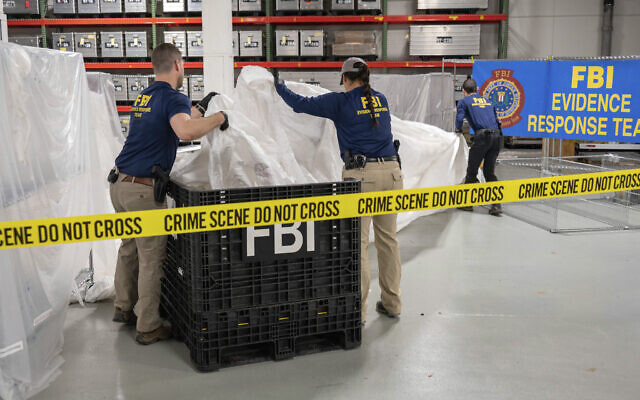




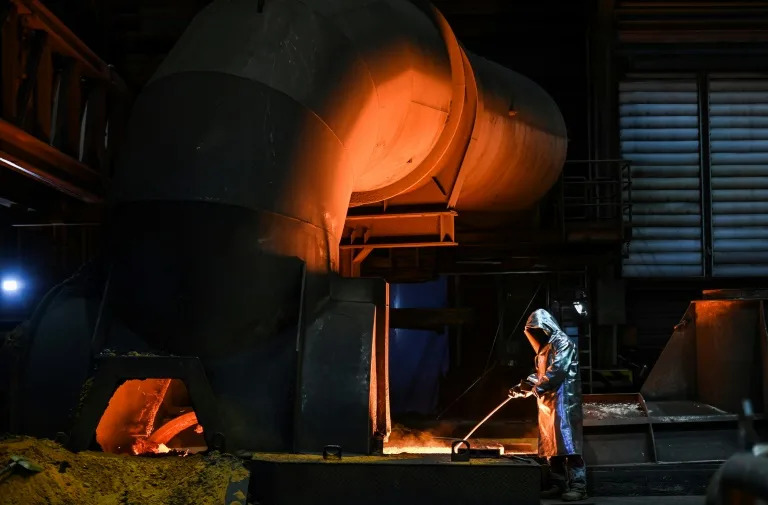


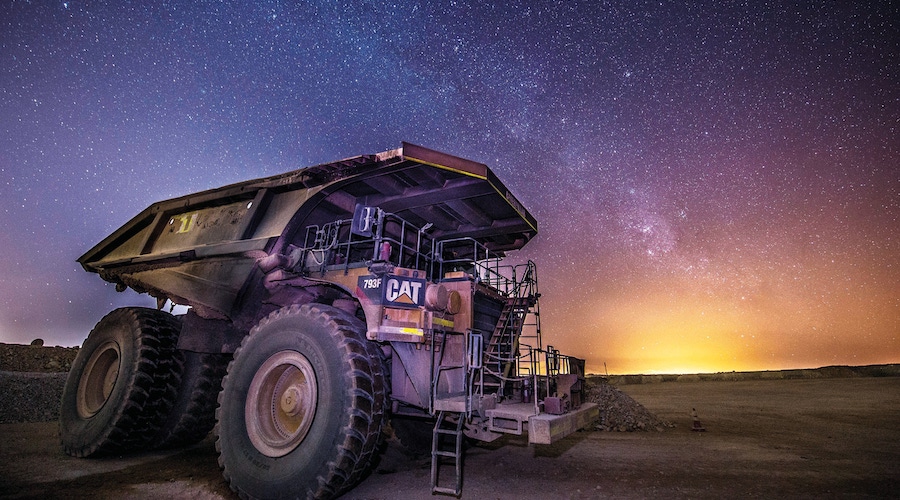

 Source: S&P Global Market Intelligence
Source: S&P Global Market Intelligence